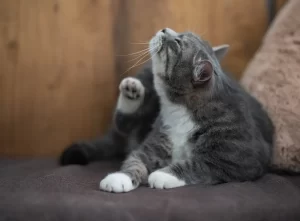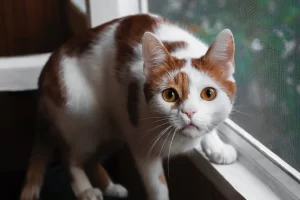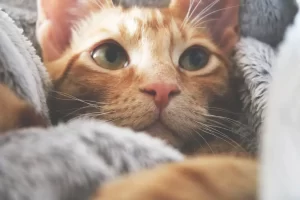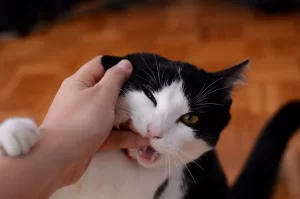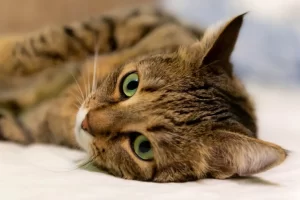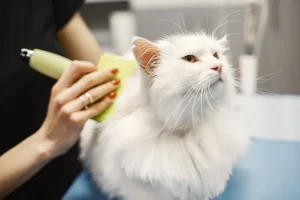Cat wounds, whether caused by scratches, bites, or accidents, can pose risks of infection and require proper care to promote healing. In addition to traditional wound care practices, such as cleaning, disinfection, and dressing, the use of natural antibiotics for cat wounds has gained attention as a potential complementary approach. Natural antibiotics, derived from plants or other natural sources, are believed to have antibacterial properties and may help prevent or treat infections in cat wounds. In this article, we will explore the concept of natural antibiotics for cat wounds, including their examples, effectiveness, safety considerations, and proper usage. Understanding the role of natural antibiotics in cat wound care can help cat owners make informed decisions about their use in promoting their feline companions’ healing process.
Table of Contents
ToggleIntroduction to Cat Wounds: Types, Causes, and Risks
Cat wounds are injuries to the skin and underlying tissues caused by a variety of factors. They can occur from fights with other cats, accidental injuries, or interactions with other animals or objects. Cat wounds can range from minor scratches to deep puncture wounds or lacerations, and they can be accompanied by pain, bleeding, and potential risk of infection.
Types of Cat Wounds
Cat wounds can be classified into different types based on their characteristics. These can include:
- Abrasions: Superficial wounds caused by scraping or rubbing of the skin, often resulting in minor bleeding and damage to the top layer of the skin.
- Puncture wounds: Deep, narrow wounds caused by sharp objects such as cat claws or teeth, which can penetrate the skin and underlying tissues, potentially causing damage to muscles, nerves, and blood vessels.
- Lacerations: Irregular, jagged wounds caused by blunt trauma or tearing of the skin, which can vary in depth and severity.
Causes of Cat Wounds
Cat wounds can have various causes, including:
- Fights with other cats: Cats are territorial animals and may engage in fights with other cats over territory, mates, or resources, resulting in scratches, bites, and other wounds.
- Accidental injuries: Cats can sustain wounds from accidental injuries such as falls, bites from other animals, or getting caught in objects such as fences or wires.
- Interactions with other animals or objects: Cats can sustain wounds from encounters with other animals, such as dogs or wildlife, or from interacting with sharp objects or rough surfaces.
Risks Associated with Cat Wounds
Cat wounds can pose several risks, including:
- Infection: Cat wounds can introduce bacteria into the body, potentially leading to infection. Bacteria such as Pasteurella multocida and Staphylococcus spp. are commonly associated with cat bite wounds.
- Tissue damage: Depending on the depth and location of the wound, cat wounds can cause damage to muscles, nerves, blood vessels, and other tissues, leading to potential complications.
- Pain and discomfort: Cat wounds can be painful and uncomfortable for cats, leading to decreased quality of life and potential behavior changes.
- Scarring and disfigurement: Healing of cat wounds can result in scarring and disfigurement of the affected area, which can have long-term cosmetic and functional implications.
Natural Solutions for Cat Wounds: Understanding How Antibiotics Work
Natural antibiotics, also known as antimicrobial or antibacterial agents, are substances derived from natural sources such as plants, animals, and microorganisms that can inhibit the growth or kill bacteria without the use of synthetic chemicals. They can be used as an alternative or adjunct to conventional antibiotics for the management of cat wounds.
Natural antibiotics work in various ways to combat bacteria in cat wounds. Here are some mechanisms of action:
- Direct killing of bacteria: Some natural antibiotics have properties that directly kill bacteria by disrupting their cell walls or interfering with their metabolic processes. For example, tea tree oil and manuka honey have been shown to exhibit antibacterial activity against a wide range of bacteria commonly associated with cat wounds.
- Inhibition of bacterial growth: Some natural antibiotics can inhibit the growth of bacteria by interfering with their ability to reproduce or form biofilms. For example, garlic and oregano oil contain compounds that have been shown to inhibit the growth of various bacteria.
- Modulation of the immune response: Some natural antibiotics can modulate the immune response, helping the cat’s immune system to better fight against bacteria. For example, echinacea and goldenseal are known for their immune-enhancing properties.
- Anti-inflammatory effects: Some natural antibiotics have anti-inflammatory properties, which can help reduce inflammation in cat wounds and promote healing. For example, aloe vera and calendula have been used topically for their anti-inflammatory effects on wounds.
- Antioxidant effects: Some natural antibiotics possess antioxidant properties, which can help neutralize harmful molecules called free radicals that are generated during the inflammatory response to wounds. For example, vitamin E and green tea extract are known for their antioxidant properties.
Keep in mind that not all natural antibiotics are effective against all types of bacteria, and their effectiveness may vary depending on the specific wound and the severity of the infection.

Top Natural Antibiotics for Cat Wounds
Natural antibiotics for cat wounds are derived from various sources and can be used as alternative or adjunct treatments to conventional antibiotics. Here are some examples of commonly used natural antibiotics for cat wounds and their reported effectiveness:
- Raw Honey: Raw honey has natural antibacterial properties and can help promote wound healing. Apply a thin layer of raw honey to the wound and cover it with a bandage. Change the honey dressing and reapply 1-2 times daily. Raw honey can help prevent infection and promote healing due to its high sugar content, low water content, and enzymes that produce hydrogen peroxide.
- Coconut Oil: Coconut oil has antimicrobial properties and can be applied topically to cat wounds to help prevent infection. Gently apply a thin layer of melted coconut oil to the wound using a clean cotton swab or gauze. Coconut oil can also help moisturize the skin and promote healing.
- Aloe Vera: Aloe vera has anti-inflammatory and wound-healing properties. Apply pure aloe vera gel directly to the wound or use aloe vera gel that is specifically formulated for wound care. Aloe vera can help soothe the skin, reduce inflammation, and promote healing.
- Calendula: Calendula has antimicrobial and anti-inflammatory properties, making it suitable for cat wounds. Calendula cream or ointment can be applied topically to the wound after cleaning. It can help reduce inflammation and promote healing.
- Tea Tree Oil: Tea tree oil has strong antibacterial properties, but it should be used with caution on cats as it can be toxic when ingested. Dilute tea tree oil with a carrier oil such as coconut oil, and apply a small amount to the wound using a cotton swab. Avoid using tea tree oil on open wounds or near the mouth or eyes of the cat.
- Witch Hazel: Witch hazel has astringent and anti-inflammatory properties that can help clean wounds and reduce inflammation. Dilute witch hazel with water and apply it to the wound using a clean cloth or cotton ball. Witch hazel can be used as a gentle cleanser for cat wounds.
- Garlic: Garlic has natural antibacterial properties and can be used as a topical treatment for cat wounds. Crush a garlic clove and mix it with a carrier oil such as coconut oil. Apply a small amount to the wound using a cotton swab. Avoid using garlic on open wounds or near the mouth or eyes of the cat.
- Colloidal Silver: Colloidal silver is a suspension of microscopic silver particles in water, and it has known antimicrobial properties. It can be used topically on cat wounds to help prevent infection. Apply a few drops of colloidal silver to the wound using a clean cotton swab or gauze.
- Echinacea: Echinacea is known for its immune-enhancing properties and can be used as a topical treatment for cat wounds. Use echinacea extract or cream and apply it to the wound according to the manufacturer’s instructions. Echinacea can help boost the cat’s immune response and promote healing.
- Lavender Oil: Lavender oil has antimicrobial and anti-inflammatory properties and can be used as a topical treatment for cat wounds. Dilute lavender oil with a carrier oil and apply a small amount to the wound using a cotton swab. Lavender oil can help soothe the skin and reduce inflammation.
- Chamomile: Chamomile has anti-inflammatory and wound-healing properties and can be used as a topical treatment for cat wounds. Brew chamomile tea, let it cool, and then apply it to the wound using a clean cloth or cotton ball. Chamomile can help reduce inflammation and promote healing.
- Neem Oil: Neem oil has natural antibacterial properties and can be used as a topical treatment for cat wounds. Dilute neem oil with a carrier oil such as coconut oil, and apply a small amount to the wound using a cotton swab. Neem oil can help prevent infection and promote healing due to its antimicrobial properties.
- Eucalyptus Oil: Eucalyptus oil has antiseptic and anti-inflammatory properties that can be beneficial for cat wounds. Dilute eucalyptus oil with a carrier oil, and apply it to the wound using a cotton swab. Eucalyptus oil can help reduce inflammation and promote healing.
- Grapefruit Seed Extract: Grapefruit seed extract has antimicrobial properties and can be used as a topical treatment for cat wounds. Dilute grapefruit seed extract with water, and apply it to the wound using a clean cloth or cotton ball. Grapefruit seed extract can help prevent infection and promote healing.
- Comfrey: Comfrey has been traditionally used for its wound-healing properties. Comfrey cream or ointment can be applied topically to the wound after cleaning. Comfrey can help promote tissue regeneration and reduce inflammation.
Cat Wound Care Essentials: Step-by-Step Instructions for Cleaning, Disinfection, and Dressing
Proper wound care is crucial for promoting healing and preventing infections in cats. Here are some important steps for cleaning, disinfecting, and dressing cat wounds, as recommended by a veterinarian:
- Wash your hands thoroughly with soap and water before handling the wound to prevent introducing additional bacteria.
- Restrain the cat gently and use a muzzle or ask for assistance if necessary to avoid getting bitten or scratched during the process.
- Use clean, sterile gloves, if available, to avoid contaminating the wound.
- Start by gently removing any debris or foreign objects from the wound using sterile tweezers or your fingers, taking care not to cause further damage to the tissue.
- Clean the wound with a mild antiseptic solution recommended by your veterinarian, such as chlorhexidine or povidone-iodine. Dilute the solution as directed and apply it using a sterile gauze pad or cotton ball, gently wiping in a circular motion from the center of the wound outward.
- Rinse the wound thoroughly with sterile saline solution or clean water to remove any remaining antiseptic solution.
- Pat the wound dry with a clean, sterile gauze pad or let it air dry. Avoid using cotton balls or swabs that may leave fibers in the wound.
- Apply an appropriate wound dressing or bandage, if recommended by your veterinarian. This may include sterile gauze, non-stick adhesive dressings, or specialized wound care products. Follow your veterinarian’s instructions on how to properly apply and secure the dressing, taking care not to apply it too tightly to avoid restricting blood flow.
- Monitor the wound for any signs of infection, such as increased redness, swelling, warmth, or discharge. If any signs of infection or worsening of the wound are observed, contact your veterinarian promptly for further evaluation and treatment.
- Follow any additional wound care instructions provided by your veterinarian, including frequency of dressing changes, use of topical or systemic antibiotics if prescribed, and restrictions on the cat’s activity level or outdoor access during the healing process.
- Avoid using any harsh or irritating substances on the wound, such as hydrogen peroxide, alcohol, or human topical medications, as these can delay healing or cause further damage to the tissue.
- Keep the cat from licking or scratching the wound excessively, as this can introduce bacteria and hinder the healing process. If necessary, use an Elizabethan collar or other protective measures recommended by your veterinarian to prevent the cat from interfering with the wound.
Recommended Diets and Supplements for Cat Wound Healing
Nutrition plays a crucial role in the healing process of cat wounds. Providing appropriate nutrients can help support the immune system, promote tissue repair, and enhance overall healing. Here are some foods and supplements that can aid in cat wound healing:
- High-quality protein: Protein is essential for tissue repair and regeneration. Include sources of high-quality protein in your cat’s diet, such as lean meats (cooked and unseasoned), eggs, and fish. Avoid raw meat, as it can increase the risk of bacterial contamination.
- Omega-3 fatty acids: Omega-3 fatty acids have anti-inflammatory properties and can help reduce inflammation associated with wounds. Fish oil or other sources of omega-3 fatty acids, such as flaxseed oil, can be added to your cat’s diet. Follow your veterinarian’s recommended dosage.
- Vitamin C: Vitamin C is important for collagen production, which is essential for wound healing. Include foods rich in vitamin C in your cat’s diet, such as citrus fruits, bell peppers, and broccoli.
- Vitamin E: Vitamin E is a powerful antioxidant that helps protect cells from damage and promotes healing. Include sources of vitamin E in your cat’s diet, such as nuts, seeds, and sunflower oil.
- Zinc: Zinc is involved in many cellular processes, including wound healing. Include sources of zinc in your cat’s diet, such as meat, fish, and eggs.
- Probiotics: Probiotics are beneficial bacteria that can support the gut health and immune system of cats, which can aid in overall healing. Probiotic supplements formulated for cats or probiotic-rich foods like yogurt can be considered, but always consult with your veterinarian for appropriate dosages and recommendations.
- Adequate hydration: Proper hydration is essential for overall health and can aid in wound healing. Ensure that your cat has access to clean, fresh water at all times.
Natural Antibiotics vs Conventional Antibiotics for Cat Wounds: Pros and Cons
Natural antibiotics, as well as conventional antibiotics, can be effective in treating cat wounds, but they have some differences in terms of pros and cons. Here is a comparison:
Pros of natural antibiotics for cat wounds:
- Reduced risk of antibiotic resistance: Overuse or misuse of conventional antibiotics can lead to antibiotic resistance, which is a growing concern in both human and veterinary medicine. Natural antibiotics, on the other hand, are less likely to contribute to antibiotic resistance, as they are typically derived from natural sources and have different mechanisms of action.
- Fewer potential side effects: Conventional antibiotics may have potential side effects, such as gastrointestinal upset, allergic reactions, and disruption of the gut microbiome. Natural antibiotics, when used appropriately, may have fewer side effects, as they are often derived from natural sources and are generally well-tolerated.
- Availability and accessibility: Natural antibiotics are often readily available and accessible, as many of them can be found in common household items, herbs, or easily purchased over-the-counter. This can make them a convenient option for some cat owners, especially in emergency situations or when veterinary care is not immediately available.
Cons of natural antibiotics for cat wounds:
- Limited scientific evidence: While there is some evidence supporting the effectiveness of natural antibiotics for certain conditions, there is often limited scientific research specifically focused on their use for cat wounds. This means that their efficacy and safety may not be well-established, and the optimal dosages and administration methods may not be clear.
- Variation in quality and potency: Natural antibiotics are not regulated in the same way as conventional antibiotics, which are rigorously tested and approved for veterinary use. This means that the quality and potency of natural antibiotics can vary, leading to inconsistent results and potential variability in effectiveness.
- Potential for allergic reactions or interactions: Cats, like humans, can have allergies or sensitivities to natural substances, and interactions with other medications or treatments can also occur. It’s important to be aware of any potential allergies or interactions when using natural antibiotics for cat wounds and to consult with a veterinarian if your cat has any known allergies or is on other medications.
- Limited spectrum of activity: Natural antibiotics may have a limited spectrum of activity, meaning they may not be effective against all types of bacteria that can cause wound infections. Conventional antibiotics, on the other hand, are often designed to target a broad range of bacteria and may be more effective against a wider spectrum of bacterial infections.
- Severity of the wound: The severity of the wound can also be a factor in determining the appropriate treatment. In some cases, such as deep, infected wounds or wounds that require surgical intervention, conventional antibiotics may be necessary to effectively manage the infection and promote healing.
Identifying Signs of Infection in Cat Wounds
Identifying signs of infection in cat wounds is crucial for timely intervention and proper treatment. If left untreated, an infected wound can lead to serious health complications for the cat. Here are some important points to consider:
- Redness and Swelling: If the wound appears to be red, swollen, and warm to the touch, it may indicate an infection. Inflammation is the body’s response to an infection, and it can be visually observed around the wound area.
- Discharge: If there is any pus, blood, or other abnormal discharge coming from the wound, it may be a sign of infection. Discharge can be thick, yellow, green, or foul-smelling.
- Increased Pain or Sensitivity: Cats may exhibit increased pain or sensitivity around the wound area when it is infected. If your cat seems to be more sensitive or shows discomfort when the wound is touched or handled, it may indicate an infection.
- Delayed Healing: Cat wounds typically heal within a few days to a week. However, if you notice that the wound is not healing or is taking longer than usual to scab over or close up, it may be a sign of infection.
- Fever or Lethargy: Cats with infected wounds may develop a fever, which can be accompanied by lethargy, loss of appetite, and a general decline in activity level. These signs may indicate that the infection has spread and systemic symptoms are present.
- Behavioral Changes: Cats in pain or discomfort from an infected wound may exhibit changes in their behavior, such as increased aggression, hiding, or avoiding touch. They may also groom the wound excessively or excessively lick the wound, which can further introduce bacteria and worsen the infection.


